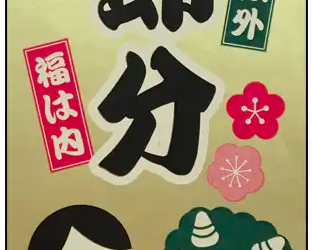
Kitchen Culture Cooking Club
EXPLORE and PRACTICE Japanese cooking in your own kitchenAbout Kitchen Culture Cooking Club
Welcome to the Kitchen Culture Cooking Club, a community space providing encouragement to those who want to EXPLORE and PRACTICE Japan’s washoku wisdom in their own kitchens.
To facilitate this, themed projects will be posted to this page periodically. Project Assignments and links to relevant reference material stored on this site will be posted to this page. Anyone, anywhere in the world, with a sincere interest in Japanese food culture is welcome to browse the contents of this page and then replicate the themed project in their own kitchen.
For those who wish to display-and-discuss their projects with like-minded people, I invite you to join the KITCHEN CULTURE Cooking Club Facebook Group (formerly the TSUDOI Project), an interactive community space.
PROJECT Tsutsumu

TSUTSUMU: Wrapping, enveloping
Wrapped foods are varied. Sometimes parchment or foil is used to enclose foods before they are cooked. Other times the wrappers are edible making pop-in-your-mouth savory packets. Below, two examples for you to try in your kitchen. Enjoy!

Miso-Slathered Salmon Steamed with Mushrooms in Foil Packets
包み蒸し
Archaeological evidence dating back at least 5,000 years shows that the early inhabitants of the Tohoku region of Japan – the Jomon peoples—fished for salmon. Millennia later salmon continues to grace Tohoku tables on a regular basis. Here, salmon is combined with a variety of mushrooms and Sendai miso, a robustly flavored, russet-colored, fermented bean paste native to the area.
The miso sauce is terrific spread on many kinds of fish, from mild-flavored flounder to more assertive oily fishes such as mackerel. Well-drained, firm tōfu can also be prepared similarly.

Piquant Miso Wrapped in Shiso Leaves
Shiso Maki しそ巻き
Japan’s Tohoku region is justly famous for its walnuts – large, meaty orbs that produce an incredibly rich, aromatic paste when roasted and crushed. The Tohoku is also known for its miso – a full-bodied red (burnished brown, really) fermented soybean paste called Sendai miso. In this dish the two local champions combine with toasted sesame to make an addictively tasty filling for herbaceous shiso leaves. Some Tohoku chefs will add a spicy spark to the sweet-and-salty miso mixture by adding a pinch of fiery shichimi tōgarashi to the filling.
Download a copy of my October 2025 newsletter about TSUTSUMU (wrapping), check it out.
Recipes and Resources
Stock (Dashi)
Dashi stock is essential to making soups and simmered or stewed dishes. Dashi is also used when making many egg dishes and all sorts of sauces, dips and dressings. Using good dashi will make a noticeable difference in the outcome of so many dishes you prepare.
Click to download recipes for (vegan) Kelp Alone Stock or Standard Sea Stock + Smoky Sea Stock
How to Cook Rice
In Japanese, the word for cooked rice, ご飯 GOHAN, is the same as the word for a meal, ご飯 GOHAN. Indeed rice is central to the meal. Download the Rice with Mixed Grains recipe.
How to Prepare Sushi Rice
Sushi dishes are made with rice that has been seasoned (with sweetened vinegar) AFTER being cooked. Download the Classic Sushi Rice recipe.
Quick Pickles
The Japanese enjoy a wide variety of tsukémono pickles, many can be assembled quickly and are ready to eat within a short time.
Download a recipe for Quick-Fix Hakusai Cabbage.
PROJECT Temari Sushi
This KITCHEN PROJECT features temari-zushi, bite-sized spheres of tart rice topped with various ingredients. HINA MATSURI is celebrated on March 3 and during the weeks leading up to it, and for several weeks thereafter, scattered chirashi-zushi and/or temari-zushi ...
PROJECT Bean-Throwing for Setsubun
Mamé maki (bean-throwing for Setsubun) tosses ogres outside (with dried beans) and brings good fortune inside (with dried beans). Fuku mamé (dry-roasted “good luck” soybeans) can be black or white (beige, really). FUKU wa UCHI ONI wa SOTO Bring in...
An Edible Ode to Winter: Sleet & Snow
Winter weather reports predicting SLEET (mizoré), are rarely welcome news. After all, the bone-chilling mixture of rain and snow is messy under foot and creates hazerdous road conditions. But when mizoré appears on a menu, it conjurs up tasty fare. Snowy white daikon...
PROJECT Noodle-Slurping
NOODLE-SLURPING Anyone who has ever spent time in Japan, or regularly eats at Japanese restaurants, knows (all too well) the sound of slurping. Noodles, for sure, but soup, tea and other liquids, too. Although noodles, soup and beverages are part of every food...




